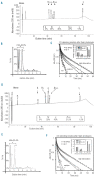Red blood cell generation from human induced pluripotent stem cells: perspectives for transfusion medicine
- PMID: 20494935
- PMCID: PMC2948089
- DOI: 10.3324/haematol.2010.023556
Red blood cell generation from human induced pluripotent stem cells: perspectives for transfusion medicine
Abstract
Background: Ex vivo manufacture of red blood cells from stem cells is a potential means to ensure an adequate and safe supply of blood cell products. Advances in somatic cell reprogramming of human induced pluripotent stem cells have opened the door to generating specific cells for cell therapy. Human induced pluripotent stem cells represent a potentially unlimited source of stem cells for erythroid generation for transfusion medicine.
Design and methods: We characterized the erythroid differentiation and maturation of human induced pluripotent stem cell lines obtained from human fetal (IMR90) and adult fibroblasts (FD-136) compared to those of a human embryonic stem cell line (H1). Our protocol comprises two steps: (i) differentiation of human induced pluripotent stem cells by formation of embryoid bodies with indispensable conditioning in the presence of cytokines and human plasma to obtain early erythroid commitment, and (ii) differentiation/maturation to the stage of cultured red blood cells in the presence of cytokines. The protocol dispenses with major constraints such as an obligatory passage through a hematopoietic progenitor, co-culture on a cellular stroma and use of proteins of animal origin.
Results: We report for the first time the complete differentiation of human induced pluripotent stem cells into definitive erythrocytes capable of maturation up to enucleated red blood cells containing fetal hemoglobin in a functional tetrameric form.
Conclusions: Red blood cells generated from human induced pluripotent stem cells pave the way for future development of allogeneic transfusion products. This could be done by banking a very limited number of red cell phenotype combinations enabling the safe transfusion of a great number of immunized patients.
Figures





Comment in
-
Generation of mature blood cells from pluripotent stem cells.Haematologica. 2010 Oct;95(10):1621-3. doi: 10.3324/haematol.2010.029231. Haematologica. 2010. PMID: 20884715 Free PMC article. No abstract available.
References
-
- Douay L, Andreu G. Ex vivo production of human red blood cells from hematopoietic stem cells: what is the future in transfusion? Transfus Med Rev. 2007;21(2):91–100. - PubMed
-
- Neildez-Nguyen TM, Wajcman H, Marden MC, Bensidhoum M, Moncollin V, Giarratana MC, et al. Human erythroid cells produced ex vivo at large scale differentiate into red blood cells in vivo. Nat Biotechnol. 2002;20(5):467–72. - PubMed
-
- Giarratana MC, Kobari L, Lapillonne H, Chalmers D, Kiger L, Cynober T, et al. Ex vivo generation of fully mature human red blood cells from hematopoietic stem cells. Nat Biotechnol. 2005;23(1):69–74. - PubMed
-
- Thomson JA, Itskovitz-Eldor J, Shapiro SS, Waknitz MA, Swiergiel JJ, Marshall VS, et al. Embryonic stem cell lines derived from human blastocysts. Science. 1998;282 (5391):1145–7. - PubMed
Publication types
MeSH terms
Substances
LinkOut - more resources
Full Text Sources
Other Literature Sources

